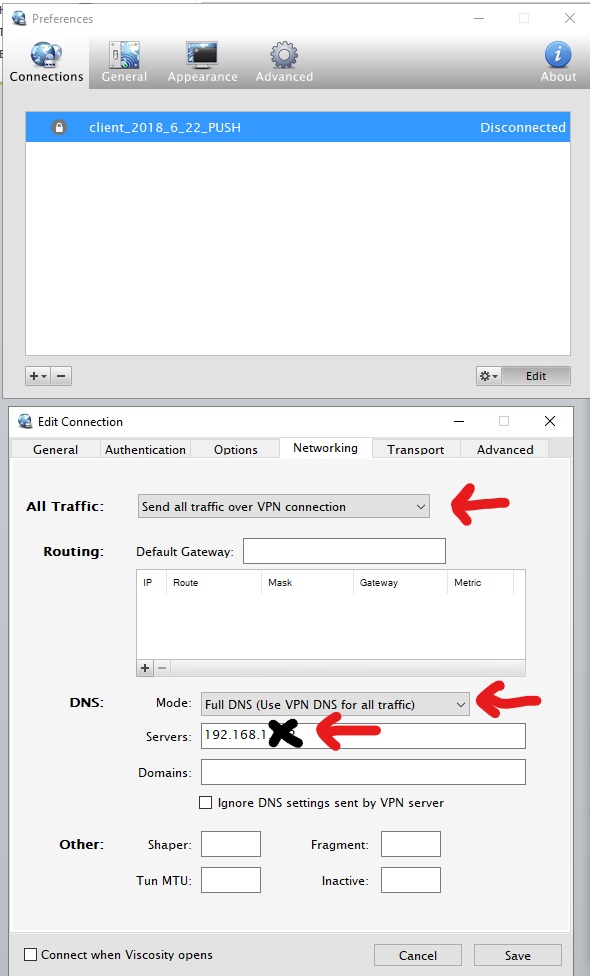

Auth is done via the Duo proxy lookup using RADIUS.
USE OF VISCOSITY VPN MAC
This business of it auto-reconnecting, even though the auto-reconnect setting is disabled, seems to be expressly an issue with the Mac client.


Interestingly enough I installed a copy of Viscosity on a Windows client today and couldn't reproduce the problem. It's not a solution but it should be the next best thing. I found some references on the Viscosity support forums to disabling reconnects in the advanced config. Has anyone else experienced a single client being able to seemingly swamp OpenVPN like this? While I agree that this is not entirely pfSense or OpenVPN issue, I believe that the fact that the Viscosity client is able to do something to disconnect other users simply via an automated reconnect is a little concerning. I've confirmed this issue in testing with Viscosity v1.7.3 and 1.7.4. We have disabled client-side caching on Windows clients so auto-reconnecting is only an issue with Viscosity clients. Running through the 10 connections of course involves the user missing or ignoring the Duo notifications on their mobile but the disconnects generally happen within the first 2 re-connection attempts. My issue is that when Viscosity does it's 10 re-connection attempts once per minute, any other users who are already connected to OpenVPN are disconnected and cannot reconnect until that Viscosity client abandons it's attempt to reconnect. It is actually set not to reconnect automatically but that's an issue I can approach SparkLabs about later. If the Viscosity user gets disconnected for any reason, Viscosity attempts to reconnect automatically. PfSense is paired with Duo for two-factor authentication and there is a local Duo proxy running that pulls authentication from Active Directory before handing the result off to Duo. The company has purchased copies of Viscosity to give out to a handful of OSX users. Most of their users use the OpenVPN client on their home computers for RDP sessions to their in-office desktops. I have a customer that has been running OpenVPN on a virtualized pfSense instance for many years virtually issue free.Īt the moment they're running 2.3.4p1 in a 64-bit instance on a 100Mbps fiber line. When you want to Disconnect VPN, click on the Viscosity Menu bar icon, and click on the connected server name.I realize this is more of a Viscosity issue but I'd like to pose it here as it impacts the pfSense OpenVPN implementation in a way that I wouldn't expect. Step #13: After a few seconds, the VPN status should turn to Connected

Step #12: Enter your FastestVPN Username and FastestVPN Password, check mark Remember and click on OK. Step #11: Right click on your desired server name and click Connect Select TCP Files or UDP Files whatever protocol you want to connect to. Step #9: Go to the Fastestvpn_ovpn folder which you downloaded in Step 1. Step #8: On Preferences Window, click on + -> Import Connection -> From File Step #7: Now click on the ‘Viscosity’ icon on your Menu bar and click Preferences.
USE OF VISCOSITY VPN INSTALL
Step #5: Click on Install if you see the following message. Step #3: Open Viscosity and drag and drop it to Applications folder. Step #2: Download Viscosity for macOS from here. Step #1: Download FastestVPN OpenVPN (TCP and UDP) Config Files from here.
USE OF VISCOSITY VPN HOW TO
This tutorial will show you how to setup FastestVPN OpenVPN Protocol using the Viscosity VPN Client on macOS X


 0 kommentar(er)
0 kommentar(er)
